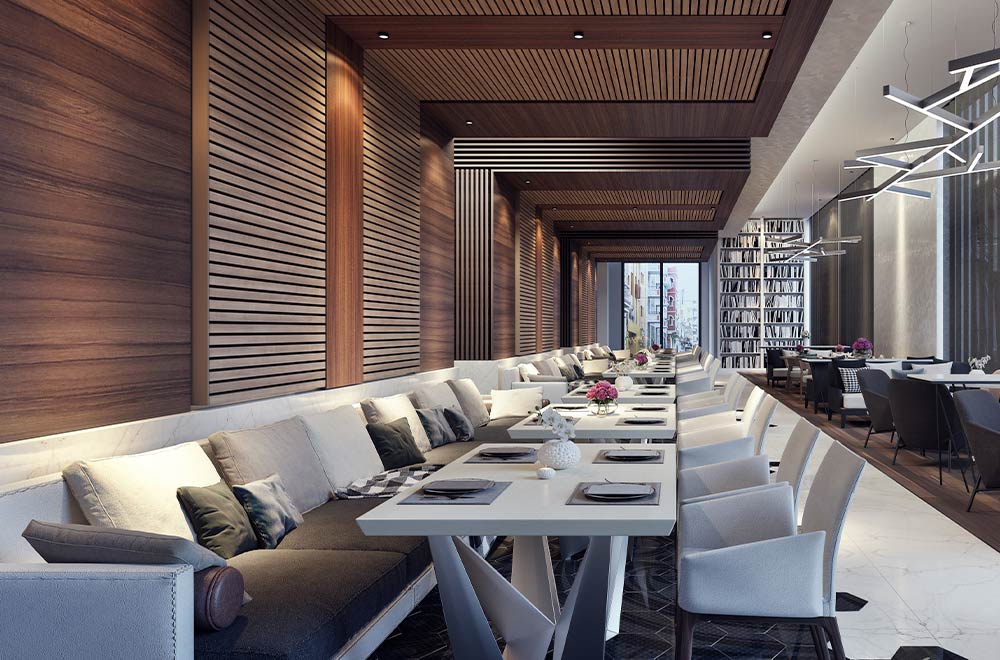Instagrammable Restaurants Islamabad: Picture-Perfect Dining Knowledge
Instagrammable Restaurants Islamabad: Picture-Perfect Dining Knowledge
Blog Article
Savor Authentic Oriental Food With a Pan-Asian Twist for a Culinary Adventure
Beginning on a cooking trip via authentic Asian food, improved with a Pan-Asian twist, provides an one-of-a-kind chance to discover the rich tapestry of tastes that define the area's varied culinary customs. This experience welcomes you to enjoy the splendid balance of tastes-- wonderful, salty, spicy, and sour-- balanced by aromatic natural herbs and spices. Imagine the innovative combination of Thai curry and ramen or the unexpected joy of sushi burritos. As you contemplate these tempting dishes, think about the social stories and historic impacts that shape them, each bite supplying a tale waiting to be discovered.

Discovering Pan-Asian Tastes
In the world of global gastronomy, Pan-Asian food sticks out for its amazing variety and the harmonious interaction of tastes from various Asian cultures. This culinary technique commemorates the one-of-a-kind active ingredients and abundant traditions found throughout the continent, creating a tapestry of preferences that is both satisfying and intriguing. Key to Pan-Asian cuisine is its ability to balance contrasting flavors-- pleasant, salty, spicy, and sour-- while highlighting the quality and quality of each active ingredient.
From the umami-rich soy sauce of Japan to the intense chili peppers of Thailand, Pan-Asian cuisine supplies a considerable scheme of tastes. These components are typically integrated in creative means, enhancing meals with layers of intricacy. As an example, the use of great smelling natural herbs such as lemongrass and cilantro, common in Vietnamese and Thai cuisine, includes a revitalizing brightness to meals, while the unification of coconut milk supplies a creamy, rich appearance.
The focus on fresh fruit and vegetables and fragrant spices guarantees that each dish is not just a banquet for the taste yet additionally for the detects. Pan-Asian cuisine welcomes restaurants to embark on a culinary journey, discovering the vast and varied landscapes of Oriental gastronomy with every bite.
Blend Dishes to Try
While Pan-Asian food is celebrated for its conventional tastes, the modern culinary landscape is increasingly welcoming fusion dishes that mix these classic elements with impacts from other regions. This cutting-edge method not just honors the rich heritage of Oriental cookeries yet also presents unique taste experiences that interest modern tastes buds.
A prime example of such a combination recipe is the Korean-Mexican taco, where marinated bulgogi beef is covered in a cozy tortilla, topped with kimchi and a hot gochujang-infused salsa. This mix weds the vibrant, mouthwatering flavors of Korea with the vibrant, fresh aspects of Mexican cuisine. In a similar way, sushi burritos have gotten popularity, joining together the fragile artistry of Japanese sushi with the hearty, hand-held comfort of a burrito, typically including blend active ingredients like tempura shrimp and avocado with a drizzle of wasabi mayo.
One more notable recipe is Thai curry ramen, which instills the luscious, aromatic flavors of Thai curry right into the comforting broth of standard Japanese ramen, creating a harmonious blend that tantalizes the senses. These fusion meals expand beyond simple novelty; they represent a culinary dialogue in between cultures, encouraging exploration and advancement on the planet of Pan-Asian food.
Essential Ingredients and Seasonings
To truly appreciate Pan-Asian cuisine, one need to understand the vital ingredients and seasonings that develop its structure. This varied culinary style attracts from an abundant tapestry of Oriental customs, utilizing a harmonious why not find out more blend of tastes and textures. Secret ingredients include soy sauce, fish sauce, and oyster sauce, which present a full-flavored umami depth necessary to Oriental recipes. Corresponding to these are rice vinegar and mirin, lending a fragile level of acidity and sweetness.
Aromatic elements are critical, with garlic, ginger, and lemongrass being ubiquitous across various Pan-Asian dishes. These ingredients offer an aromatic base that enhances the intricacy of flavors. Flavors such as celebrity anise, cardamom, and cinnamon present heat and personality, echoing influences from regions like China and India.

Food Preparation Methods and Tips
Grasping the art of Pan-Asian food calls for familiarity with its distinctive cooking methods, each adding to the vivid tapestry of flavors this culinary tradition is celebrated for. Central to these techniques is the stir-fry, a quick food preparation method that preserves the dietary stability and dazzling colors of active ingredients. Using a wok, the stir-fry technique permits even heat circulation, vital for attaining the characteristic texture and taste balance of Pan-Asian recipes.
Another basic technique is steaming, particularly prevalent in Chinese cuisine. This mild technique maintains the natural tastes and nutrients of active ingredients, making it perfect for fish and shellfish and veggies. Dumplings, a precious staple, usually gain from steaming, causing soft, delicious appearances.
Grilling, likewise indispensable, gives great smoky depths to dishes such as Oriental bulgogi or Japanese yakitori (Romantic restaurants Islamabad). This strategy frequently involves marinading ingredients, permitting flavors to pass through deeply before cooking over an open fire or warm plate
Lastly, mastering the art of balancing tastes-- pleasant, sour, salty, bitter, and umami-- is critical. Correctly layering these elements can elevate a meal from ordinary to casa garcia extraordinary, supplying a complicated and pleasing culinary experience that personifies the essence of Pan-Asian cuisine.
Eating Experiences Worldwide
Around the world, Pan-Asian food offers an unparalleled eating experience, celebrated for its rich tapestry of tastes and vivid presentations. This cooking sensation has actually transcended social limits, catching the hearts and tastes of food lovers worldwide. In worldwide cities fresh York, London, and Sydney, Pan-Asian restaurants offer as fusions where cooking traditions from Thailand, Japan, China, and beyond assemble, offering diners with an eclectic mix of meals that highlight the region's diversity.
The global appeal of Pan-Asian cuisine hinges on its capacity to provide both credibility and innovation. Cooks masterfully wed conventional active ingredients such as lemongrass, soy sauce, and miso with contemporary methods, resulting in recipes that are both acquainted and refreshingly brand-new. This combination permits diners to begin on a cooking journey that respects heritage while accepting modernity.
Additionally, eating experiences are boosted through attentively created settings that reflect the ethos of Pan-Asian aesthetics. From minimalist Japanese-inspired interiors to vivid Thai-themed areas, each restaurant uses an one-of-a-kind setting that complements the culinary offerings. Because of this, customers are not just consuming a meal however partaking in a social experience, making Pan-Asian eating a truly global sensation.
Verdict
The exploration of Pan-Asian cuisine uses a profound understanding of the elaborate interplay of tastes and cooking traditions across Asia. By welcoming blend recipes such as Thai curry ramen and sushi burritos, the cooking trip not just highlights the adaptability of standard active ingredients but additionally showcases cutting-edge modern-day methods. This gastronomic experience, enhanced by cooking techniques and important spices, supplies an one-of-a-kind opportunity to value the social variety and culinary creativity that define Pan-Asian cuisine on an international scale.
Getting started on a culinary trip through authentic Eastern cuisine, boosted with a Pan-Asian twist, provides an unique chance to discover the rich tapestry of tastes that define the area's diverse cooking customs.In the realm of international gastronomy, Pan-Asian food stands out link for its impressive diversity and the unified interplay of flavors from numerous Oriental societies. Key to Pan-Asian cuisine is its capability to balance different flavors-- wonderful, salted, spicy, and sour-- while highlighting the quality and quality of each ingredient.

Report this page